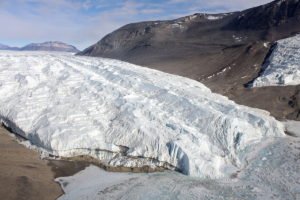Researchers looking at air trapped within Antarctic ice have found humans are putting more methane into the atmosphere through fossil fuel emissions than previously thought.

Using ice cores from Antarctica’s Taylor Glacier, an international team of researchers – including New Zealand and Australian scientists – measured natural rates of methane in the atmosphere over the last 11,000 years. Their results, published today in Nature, showed natural levels were much lower than previously estimated, which in turn means methane emissions from human activities are much greater than expected.
It had been thought that global warming would trigger natural methane emissions, but the researchers found no sign of increased emissions at the end of the last ice age. Niwa atmospheric scientist Dr Hinrich Schaefer told Newstalk ZB, “when warming occurs we’re worried that permafrost and marine sediments might release large amounts of methane, and again this methane would have been stored away in reservoirs for thousands of years”.
“Because we also looked at samples that spanned a rapid warming event, we could show that there was no additional old methane coming into the system at the time. So that means for future warming, we’re a little more optimistic that there’s not going to be a big burst of methane coming out of the permafrost or marine sediment that is going to make the whole mess of climate change worse.”
He said that showing fossil fuels were a bigger contributor to human-forcing of climate change “gives us a better understanding of what we can do about mitigating climate change and that we should get to work on it”.
The research has been covered by local media, including:
NZ Herald: Methane discovery could change climate priorities
Newshub: Fossil fuel emissions worse than previously thought – study
Newstalk ZB: Scientists make break through in climate change research
NZ Newswire: Ice study puts greenhouse blame on humans
The Conversation: Antarctic ice reveals that fossil fuel extraction leaks more methane than thought